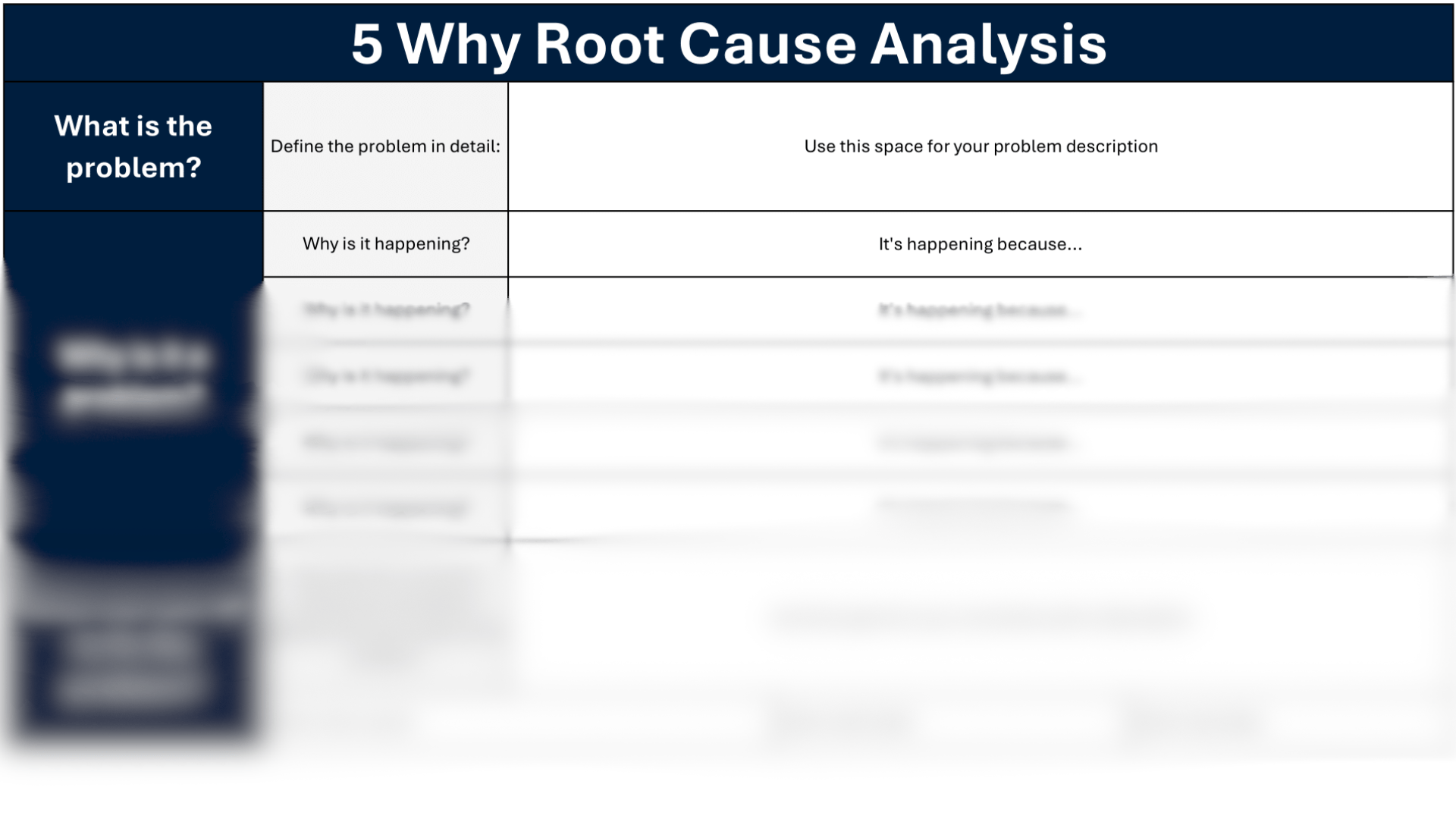5 Why Analysis Template
Resources >Template Library > 5 Why Analysis Template
Download this free 5 why analysis template from Frontline Data Solutions to perform the 5 whys for any incident, event, problem, or project you’re trying to understand.

What is a 5 Why Analysis?
Using a 5 why analysis template is an effective method for finding the root cause of a problem, injury, or incident. Through relentless questioning of surface-level causes, you can tackle the underlying issues that create negative downstream effects.
It was originally developed by Sakichi Toyoda developed this methodology to improve manufacturing processes at Toyota. Today, it’s used across industries—from safety and quality assurance to operations and management.
The goal is to go beyond surface-level symptoms and find the root cause, which allows you to implement permanent solutions instead of temporary fixes.
Why You Should Use a Template
Using a standardized 5 why analysis template offers several key benefits:
- Consistency: If everyone on your team follows the same structured process, your root causes analyses will be more reliable and easier to compare.
- Efficiency: Using a template keeps discussions focused and reduces the time it takes to complete an analysis.
- Accountability: Documented analyses provide a clear record of decisions and action items.
- Training: Templates help new team members learn and apply the 5 whys quickly.
Without a structure, it’s easy for teams to veer off track or stop at the wrong “why.” A template ensures that you’re solving the real problem every time.
What a 5 Why Analysis Template Should Include
A good 5 Why analysis template should have these sections:
- Problem Statement: A clear, specific description of the problem you’re investigating.
- Why #1 to Why #5: Space to write each question and answer in sequence.
- Root Cause Identified: A place to document the final root cause.
- Corrective Actions: Steps that will address the root cause and prevent recurrence.
- Sign-Off: Section for review and approval to ensure the team agrees on findings and next steps.
Optional fields like date, department, team members involved, and reference incident numbers can also help tie the analysis to larger organizational processes.
Tips for Conducting the 5 Whys
When doing a 5 why analysis, you might be tempted to focus on the people not the process. For the most effective analysis, however, you should always look to find the flaw in the system. People are going to make mistakes. Your job is to give them very few (if any) opportunities to do something unsafely or incorrectly.
Another tip is to be as detailed as possible in your answers to “why.” Try to focus on process flaws, not the people involved. You can always go beyond the 5 whys if you need to, especially if the problem has many variables and complexities. A good way to improve your analysis is to bring in team members who are familiar with the process or affected area.
If you’re ready to start improving your problem-solving process, download our free 5 why analysis template in Excel format. Like our EHS action tracking software, this checklist is designed to simplify your incident management process and introduce a standard method for investigation and corrective action.
More Templates to Discover
Found this template helpful? You might like some of these, too:
